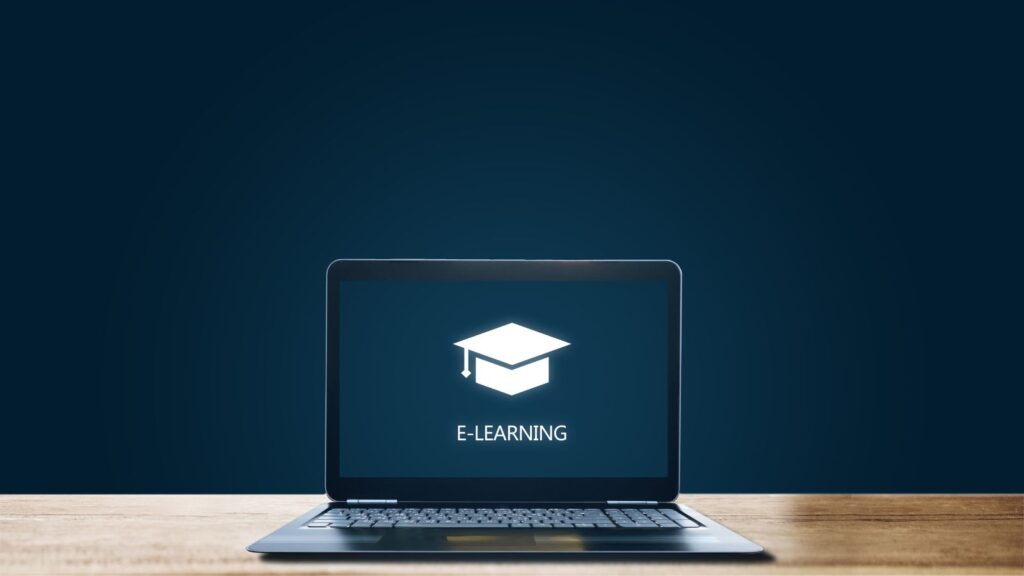Forget the dusty textbooks and monotonous lectures of yesteryear. Today’s high schoolers are embracing a new era of education fueled by technology. Tech, from VR expeditions to online collaboration, transforms learning; it is no longer a distraction but a potent tool.
In this article, we explore how high schoolers use technology to enhance learning through EdTech’s exciting advancements.
Leveraging Google Drive for Organization and Collaboration
For high school students, Google Drive is now indispensable, providing a seamless platform for organizing and collaborating effortlessly. According to EdTech, many K–12 users treated Google Drive as an electronic junk drawer, often forgetting their stored files. This behavior underscores the widespread adoption of technology among high school students.
Google Drive’s apps like Docs, Sheets, and Slides facilitate real-time collaboration, bridging distances between students seamlessly. It encourages a collaborative setting where ideas are swiftly shared, edited, and expanded upon, fostering dynamic interaction among participants.

Also, Google Drive’s cloud storage ensures documents are accessible anywhere, reducing the risk of lost homework or forgotten assignments.
Accessing Exam Papers and Study Resources Online
High school students rely on online platforms to access exam papers, study guides, and supplemental learning materials from the internet. Numerous educational websites offer extensive resources tailored to different subjects and preferences in learning styles. These platforms provide interactive tutorials, practice quizzes, and detailed explanations that help students grasp complex concepts and prepare effectively for exams.
Also, many school districts and educational institutions upload previous exam papers online, allowing students to practice with real exam formats and questions.
However, UNESCO said most US education software licenses (about 67%) weren’t used much. The EdTech Genome Project found that many educational tools, around 85%, didn’t work well or weren’t used right. This means that much money spent on these tools might not help students much.
The data highlights the growing reliance on digital platforms to complement traditional learning methods. However, there is also a need for guidance in choosing the right educational platforms and tools.
Exploring the Role of Social Media in Learning
Social media platforms, traditionally seen as distractions, are now being harnessed as powerful educational tools by high school students. Platforms like YouTube, Twitter, and Instagram provide unique opportunities for collaborative learning, knowledge sharing, and real-time communication. Students use educational hashtags, study groups, and subject-specific pages to connect, seek help, and exchange resources with peers and experts.
Instagram, for instance, is used by students to follow educational accounts that offer tips, tutorials, and motivational content. Teachers and educational influencers utilize Instagram Stories and IGTV to deliver bite-sized lessons, making learning more engaging and accessible. However, the use of social media in education is not without controversy.
Concerns have been raised about the potential for social media to exacerbate feelings of inadequacy and social comparison, particularly among teenagers. An ongoing lawsuit against Instagram highlights these concerns. The Instagram lawsuit alleges that the platform’s algorithms prioritize content designed to be emotionally charged and controversial. It potentially leads to negative mental health effects in vulnerable users.
TorHoerman Law notes that Instagram users seeking status and comparing themselves socially are more susceptible to mental health issues. These users face increased risks of suicide attempts, eating disorders, sleep problems, and other mental health challenges linked to their Instagram usage. It underscores the potential negative impact of certain behaviors on mental well-being in the digital age.
Embracing Online Courses for Skill Development
More K-12 students resort to online courses to gain additional skills and complement their conventional schooling. Online platforms offer many courses covering everything from coding and digital marketing to creative writing and advanced mathematics. Students can learn at their speed and delve into topics beyond what’s covered in their school curriculum through online courses.
The accessibility of these online platforms allows students to gain valuable skills that are highly relevant in today’s digital economy. Learning to code online can lead to tech career opportunities, and entrepreneurship courses can motivate students to start their businesses.
Engaging with Online Tutoring Sites for Academic Support
The internet has transformed the way students access academic support. Online tutoring platforms connect high schoolers with qualified tutors in a convenient and personalized setting.
These platforms offer numerous benefits. Students can connect with subject-specific tutors, receiving targeted instruction tailored to their needs. Online tutoring provides unmatched flexibility, allowing students to schedule sessions around their busy schedules. Also, various tutoring options, like live video sessions, interactive whiteboard lessons, and asynchronous text-based communication, cater to different learning styles and preferences.
The effectiveness of online tutoring is reflected in a study published by ScienceDirect. The study found that most high school students who used online tutoring services reported significant improvements in their grades. It underscores the growing reliance on digital tutoring solutions as an essential complement to traditional classroom instruction.
Additional Tech Tools and Platforms for Enhanced Learning
Beyond the well-known platforms, various additional tech tools are enhancing high school learning experiences. Apps help students organize notes and manage tasks efficiently, fostering better study habits. Language learning apps provide interactive and gamified ways to learn new languages. The integration of AI helper tools further augments these learning experiences, offering personalized recommendations, automated grading, and even virtual tutoring to support students in their academic journey.
For STEM subjects, many tools offer powerful computational capabilities and hands-on coding practice. Virtual labs and simulation tools allow students to conduct experiments in a virtual environment, making complex scientific concepts more accessible.

Challenges and Considerations in Tech-Enhanced Learning
While technology offers numerous benefits for high school students, it also presents challenges and considerations. One major concern is the digital divide. Not all students have equal access to high-quality devices and reliable internet connections, which can exacerbate educational inequalities.
The overreliance on technology can lead to issues such as screen fatigue, reduced attention spans, and cybersecurity risks. Balancing tech and traditional teaching and promoting digital literacy is crucial to overcoming challenges and maximizing technology’s educational potential.
Frequently Asked Questions
How do Social Media Platforms Enhance High Schoolers’ Learning?
Social media platforms improve students’ learning by connecting them with peers and experts through educational hashtags, study groups, and subject-specific pages. These platforms provide access to diverse resources and real-time collaboration, making learning more interactive and engaging.
What Benefits do Online Courses and Tutoring Sites Offer High School Students?
Online courses and tutoring sites give high school students the flexibility to learn at their own pace and schedule around commitments. They provide access to specialized expertise and diverse learning methods, helping students improve their skills and academic performance effectively.
How Can High Schoolers Optimize Google Drive for Studies?
High schoolers optimize Google Drive by organizing files into subject folders and using shared documents for collaborative group projects. Also, utilizing Google Drive’s tools, like Docs for note-taking and Sheets for tracking assignments, can enhance productivity and streamline their study process.
The Future of Learning
The ongoing evolution of technology is reshaping the high school learning environment as it becomes increasingly integrated into education. Students use digital resources like Google Drive, online courses, and tutoring platforms to enhance academic experiences and acquire new skills.
However, it’s vital to tackle issues accompanying this tech transition, like the digital gap and cybersecurity worries. By fostering equitable access and promoting balanced tech use, educators and policymakers can ensure that all students benefit from these advancements.
